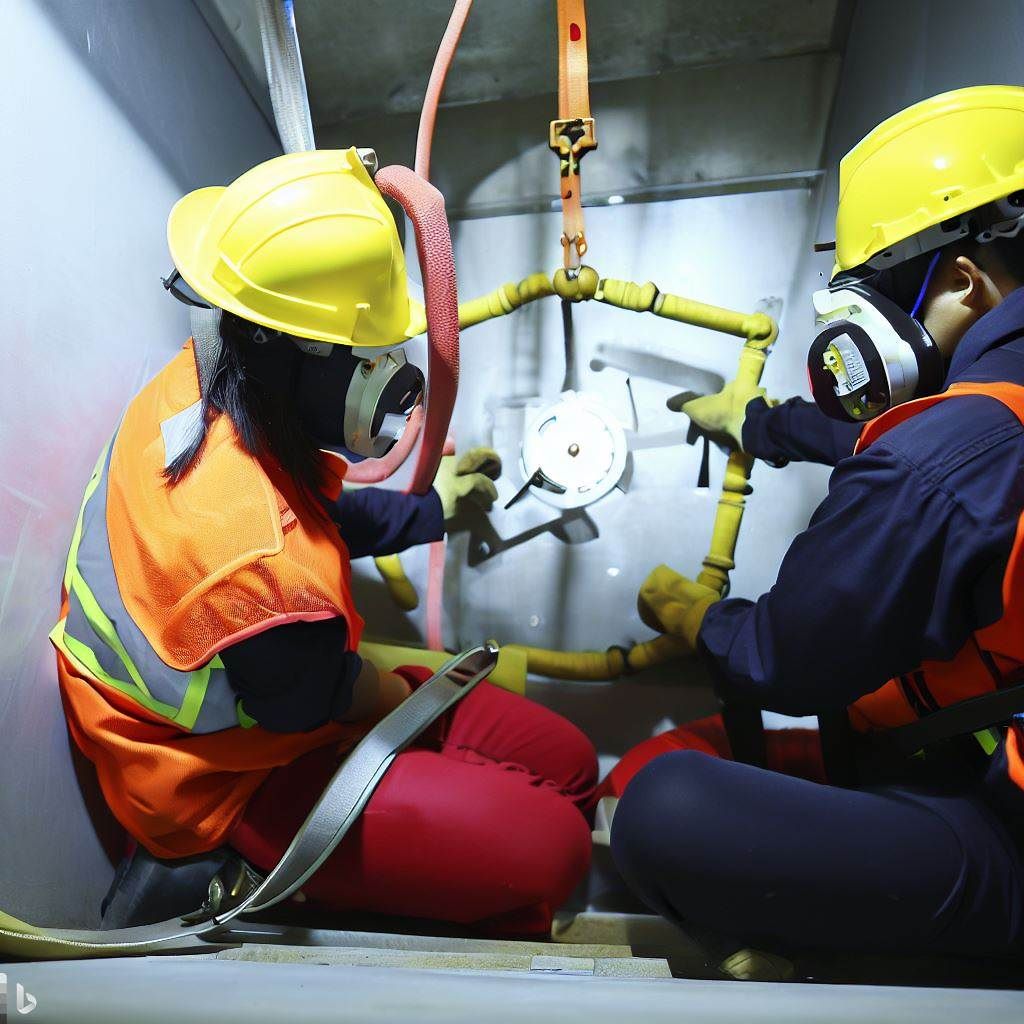Decoding OSHA Regulations: Is Annual Confined Space Training a Must-Have for Compliance?
OSHA, or the Occupational Safety and Health Administration, is a federal agency in the United States responsible for ensuring safe working conditions for employees across various industries. The agency enforces regulations and standards that businesses must comply with to protect their workers from hazards and potential injuries.
As a business owner or safety manager, staying up-to-date with OSHA regulations pertinent to your industry is crucial. One such regulation involves confined space training. This article will delve into the specifics of OSHA’s requirements for confined space training and answer the question: does OSHA require annual confined space training?
Understanding Confined Spaces
Before discussing OSHA’s requirements for confined space training, it is essential to understand what confined spaces are. A confined space is an area large enough for an employee to enter and perform work, has limited or restricted means of entry or exit, and is not designed for continuous occupancy. Examples of confined spaces include tanks, silos, storage bins, vaults, and pits.
There are two types of confined spaces: non-permit-required and permit-required. Non-permit-required confined spaces do not contain any hazards capable of causing death or serious physical harm. On the other hand, permit-required confined spaces present a hazardous atmosphere, engulfment hazards, or other safety risks that warrant additional safety measures and training.

OSHA Requirements for Confined Space Training
According to OSHA’s 29 CFR 1910.146 regulation, employers must provide adequate training to all employees who work in or around confined spaces. This training is essential to ensure that employees can identify potential hazards, understand the necessary safety precautions, and know how to respond in an emergency.
The training must cover the following topics:
- The nature and scope of confined space hazards
- The proper use of protective equipment
- The roles and responsibilities of each team member involved in a confined space entry
- The procedures for entering and exiting confined spaces
- Emergency response procedures, including rescue and first aid
Frequency of Confined Space Training: Annual or Otherwise?
Now that we understand the importance of confined space training, the question remains: does OSHA require annual confined space training? The answer is not as straightforward as one might think.
OSHA does not explicitly state a specific frequency for confined space training. However, employers must ensure employees maintain proficiency in the skills and knowledge necessary for confined space work. This means that employers must provide training:
- Whenever there is a change in the confined space operation that presents a new hazard
- Whenever an employee demonstrates a lack of understanding or skill in performing confined space tasks
- Whenever there are changes in the confined space regulations or industry best practices
In practice, many employers conduct annual confined space training to ensure that employees remain up-to-date and proficient in confined space safety procedures.
Benefits of Annual Confined Space Training
While OSHA does not explicitly require annual confined space training, there are several benefits to conducting this training on an annual basis:
- Reinforcing essential safety skills: Regular training helps employees retain critical knowledge and skills, reducing the likelihood of accidents or injuries.
- Adapting to regulations or industry best practices: Annual training provides an opportunity to update employees on any changes in confined space regulations or recommended safety procedures.
- Identifying and addressing skill gaps: Regular training allows employers to identify and address areas where employees may need additional instruction or practice.
- Building a strong safety culture: Annual training demonstrates an organization’s commitment to safety and helps foster a culture of continuous improvement.
Consequences of Non-Compliance with OSHA Regulations
Failing to comply with OSHA regulations, including confined space training, can seriously affect businesses. These consequences can include:
- Fines and penalties: OSHA can impose significant fines on businesses that do not comply with its regulations.
- Increased risk of accidents and injuries: Inadequate training can lead to dangerous situations and an increased risk of accidents and injuries in confined spaces.
- Damage to reputation: Non-compliance with OSHA regulations can harm a company’s reputation, making attracting and retaining employees and clients more challenging.
- Legal liability: Companies that fail to comply with OSHA regulations may be held legally responsible for any accidents or injuries that occur as a result.
Best Practices for Confined Space Training Programs
To ensure that your confined space training program is effective and compliant with OSHA regulations, consider implementing the following best practices:
- Develop a comprehensive training program covering all confined space safety aspects, including hazard recognition, protective equipment use, entry and exit procedures, and emergency response.
- Utilize a combination of classroom instruction, hands-on training, and practical exercises to reinforce learning and ensure employees can apply their knowledge in real-world situations.
- Customize training materials to reflect your organization’s specific, confined spaces and potential hazards.
- Regularly evaluate and update your training program to remain current and aligned with industry best practices.
Recordkeeping and Documentation for OSHA Compliance
Maintaining accurate records and documentation is a crucial aspect of OSHA compliance. Employers should keep detailed records of all confined space training sessions, including:
- The date of the training
- The names and job titles of all employees who attended
- The topics covered during the training
- The qualifications of the person who conducted the training
These records should be maintained for at least three years, as OSHA may request documentation for an inspection or investigation.

Additional OSHA Training Requirements for Confined Spaces
In addition to general confined space training, OSHA has specific training requirements for employees who perform certain roles in confined space operations. These roles include:
- Authorized entrants: Employees who enter and work in confined spaces must receive specialized training on the hazards they may encounter and the protective measures they must take.
- Attendants: Employees responsible for monitoring the safety of confined space entrants must receive specialized training on recognizing and responding to potential hazards.
- Rescue team members: Employees who perform confined space rescues must receive specialized training on rescue techniques and equipment.
Conclusion: Ensuring Compliance with OSHA Regulations
In conclusion, while OSHA does not explicitly require annual confined space training, employers must provide regular, comprehensive training to ensure employees remain proficient in confined space safety procedures. By following the best practices outlined in this article and maintaining accurate training records, employers can minimize the risk of accidents and injuries in confined spaces and ensure compliance with OSHA regulations.
Frequently Asked Questions:
Q: Does OSHA require annual confined space training?
A: OSHA does not explicitly require annual confined space training. However, employers must ensure employees maintain their proficiency in confined space safety skills and knowledge. Many employers choose to conduct annual training to achieve this goal.
Q: What topics should be covered in confined space training?
A: Confined space training should cover hazard recognition, protective equipment use, entry and exit procedures, roles and responsibilities of team members, and emergency response procedures.
Q: What are the consequences of non-compliance with OSHA regulations?
A: Non-compliance with OSHA regulations can result in fines, increased risk of accidents and injuries, damage to reputation, and legal liability.
Q: How long should employers keep records of confined space training?
A: Employers should maintain records of confined space training for at least three years.
